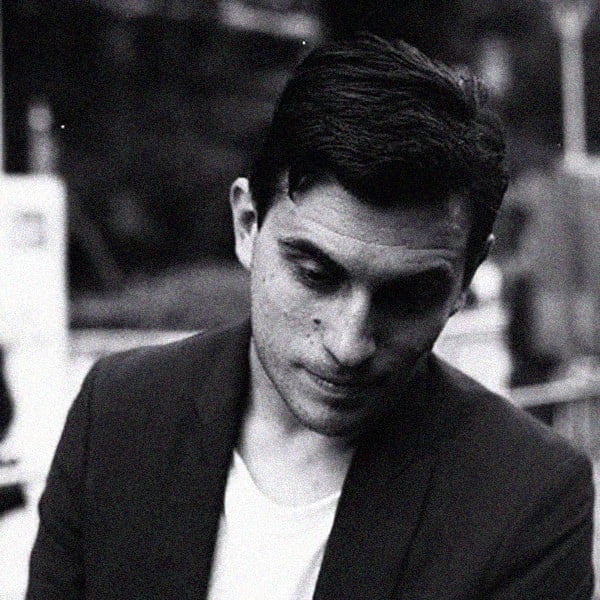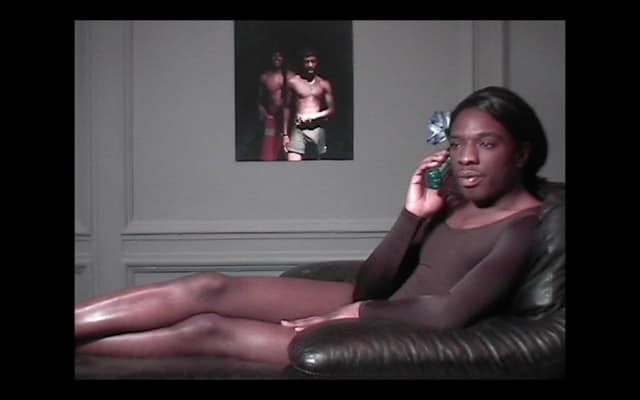Articles and Features
Standards & Practices, Volume 2
Kalup Linzy

“Videos that exist in an area between soap operas, r&b music videos, cable access, regional worship programming, and the really slow, sexy parts of French new wave films.”

William Pym
Standards & Practices
Comedian Dave Chappelle has a bit in his last standup special where he talks about being called to the Standards and Practices department of his cable network and being told to do things differently. He’s not too bothered about what the network thinks. There’s a vulgar, uproarious punchline. I like the idea of standards and practices. It makes for a good joke. The enforcer of arbitrary rules and norms, a person whose job it is to frame what’s right, right now. For how can you tame a moment? In the international art world, where I have worked since 2002, I grew to become very familiar with a world of amorality, grandiosity and arrogance. I watched pre-2008 hypercapitalism change everyone’s style, and watched money get darker. Now the art world is being rebuilt, like everything else, in the image of a new generation. And one thing is true now as it was then — the art world is a place of porous standards, and practice takes many forms. I am still here, somehow, and I am the Standards and Practices department.
Volume 2: Kalup Linzy
I am a fan of Kalup Linzy, the sort of fan who is into everything he does. Kalup Linzy has for the past 15 years made videos — in art galleries and biennials and on the internet — that exist in an area between soap operas, r&b music videos, cable access, regional worship programming, and the really slow, sexy parts of French new wave films. Linzy is from a small, tight-knit community in central Florida, got two art degrees from USF in Tampa, moved to New York in his early 20s, and started showing around immediately. Most New Yorkers saw his work for the first time in 2005’s Frequency, the second in the series of significant survey exhibitions initiated by Thelma Golden at the Studio Museum in Harlem. I decided this man was an icon from seeing his work at that show, and have not since questioned that first impression.
The art world has long been very advanced in terms of sexuality and gender. Indeed, when it comes to the location of power, the modern art world has been ahead of the cultural curve. Picture Jasper Johns, Robert Rauschenberg, Merce Cunningham and John Cage meeting to hang out in the early ’50s. They linked up every day for months at a time, this quorum, mapping the future, accidentally, as easily as getting drunk in the afternoon, because they knew they had the wind at their backs: they knew that our place, art, might be a place of freedom, not entrapment. It was theirs to make. And the scene has flourished through its progressiveness about sex. The meeting places of the contemporary art milieu — the gallery opening, the MFA class, the bar everyone hangs out at, the art fair preview— have been safe spaces since long before the word existed. Pressing the flesh at any such art fair party, I can reliably count on banter with lifelong closet homosexuals, genderless sex energy beings, folks in Boston marriages or committed respectful sham partnerships, libertines, self-endangering libertines, gender gurus who’ve figured everything out, adult babies who haven’t figured anything out, and simple kinky people — gay, straight and in between. I can count on seeing these people because they have been around forever. No one stands out or surprises you, because everyone’s here. All of us. The art world is populated with all kinds of people unfussed about who they are.

“He is who he is, and since he made this world, he fits in it just like anybody else. “
It is important to emphasize at this point that I am speaking from my experience, which is the only thing I can do. There are other versions of this place and this time, told by people of different ages, people who who did not come up like this at all, and those are also official histories. I am simply speaking from a place that brought me, from a sheltered position, to recognize the filigree of human sexuality. I saw a man in a full face of makeup for the first time in my mid-20s at the old Dia Center in Chelsea (his name is Milovan Farronato, now a well known curator). The first transgender person I met was on an art fair floor, she was running the labor crew on my aisle during setup, we kicked it in the camaraderie flow zone of the manic labour days before a fair opens.
Kalup Linzy made an album last year called Tangled Up. His music is blurry and cheap, very much home-made, with a signature stacking and distortion treatment on the vocal that sounds like a few Linzys are sharing one cardboard tube to sing through. He released seven videos for this record on the internet. Trump Drama shows Linzy in a series of slightly bruised neoclassical setups— Munich and the storied Haus der Kunst, I’m told — where he poses in empty sculpture niches and ambles down the colonnades. The sideways light suggests early morning; the only other people around are two cops on horses, who pause with him for a setup, likely hastily arranged. He is wearing a high-waisted baby-doll dress over trousers and a long, straight wig. An intercut narrative shows an attractive gathering of people in crumpled preppy existentialist drag, wool turtlenecks and muted colours, sitting around an apartment smoking cigarettes and nursing glasses of wine. There are an unusually large number of bottles all over the place. Some have candles stuck in them, wax tears blobbing over the necks. The two scenes become one — the people are Linzy’s friends, so he comes over and they gyrate slowly around him while he lip syncs the song. It’s a quick three-minute clip, airy and dispersing like froth, like any good song on the radio. The looping synthesized saxophone lead line, with more than a little bit of Rump Shaker by Wreckx-N-Effect, stays in my head throughout the day.
The song is incomprehensible, competing lyrics on top of each other, multiple voices doing a call-and-response that adds up at times to a wordless wail. When audible, the lyrics are direct and unadorned. He is tired of the Trump Drama, so much going on, so much to sort out, he can’t take much more, he doesn’t know what to do. There’s no release. Round and round he goes with this drama. There’s no resolution. For the duration of the song you’re caught in the swirl. He holds a goblet of wine, loosely; it doesn’t quite spill.
In the environment of Trump Drama, the fact that Linzy is African American, or that he is in a dress and wig, feels neither unusual nor particularly notable. He is who he is, and since he made this world, he fits in it just like anybody else. Linzy makes art that mirrors the experience of the art world at its best: when you’ve forgotten what reality has been historically established to be, it is yours to make, through consensus and optimism, like oil paints mixing on a glass palette. Indeed, Linzy’s work represents identity’s evolution from a position of purity, opportunity and shared enterprise, rather than defiance. It’s all so natural, and through him one might take heart, rather than be nervous, about the way human identity is developing, in art and in the bigger world. Praise him in advance.
Relevant sources to learn more
Read more about Kalup Linzy on his Website: kaluplinzystudio.com
Kalup Linzy and the Tulsa Artist Fellowship
2019 TBBCA Impact Kalup Linzy – See the video
Visit the David Castillo gallery on: davidcastillogallery.com
Watch more videos by Kalup Linzy on his YouTube Page
Read previous column by William Pym Standards & Practices, Vol.1 : Barry Le Va